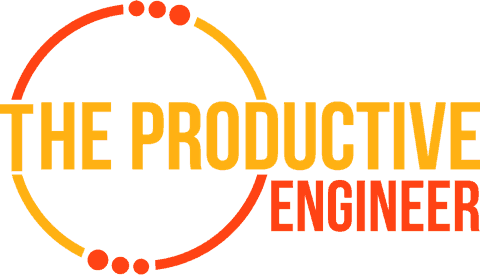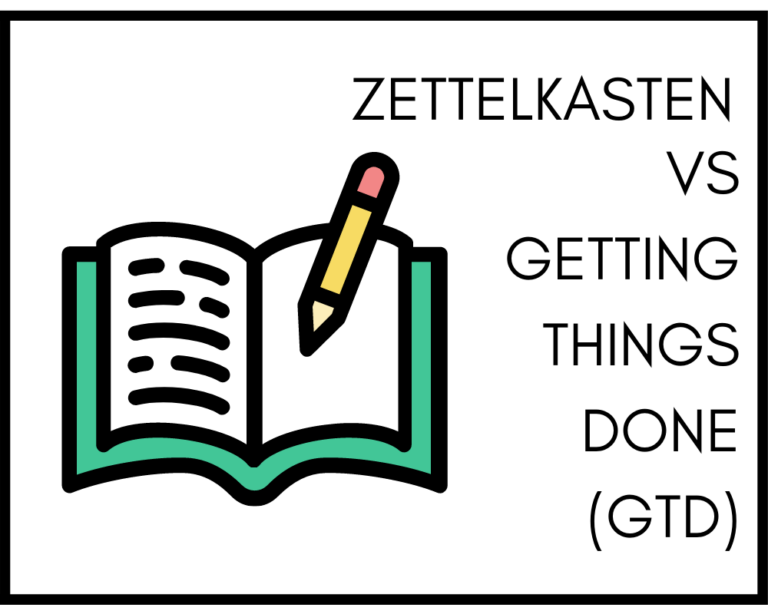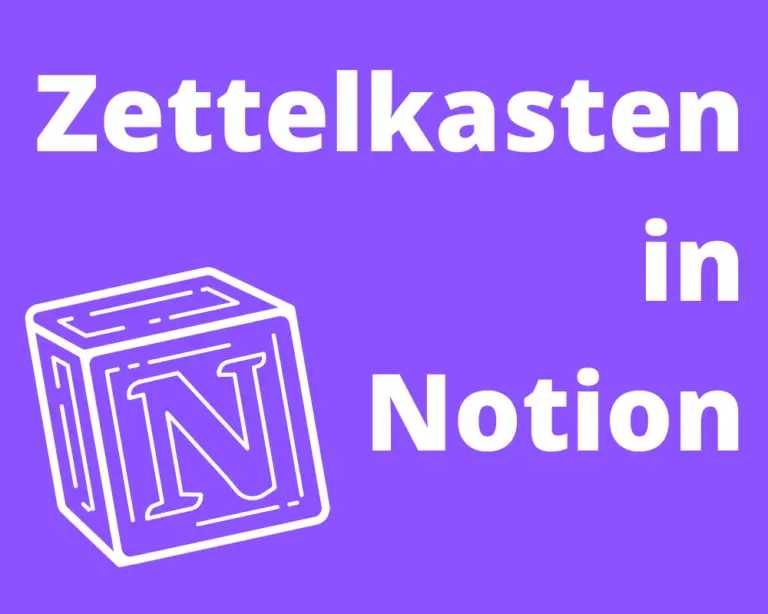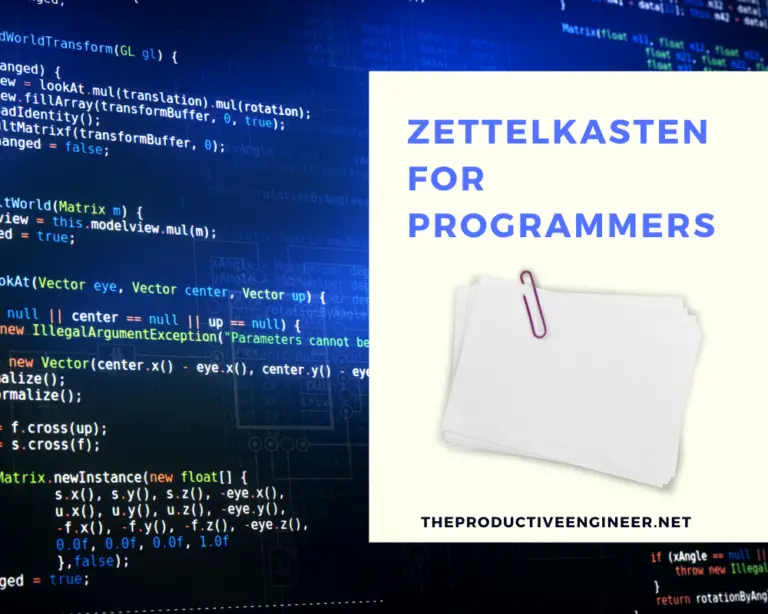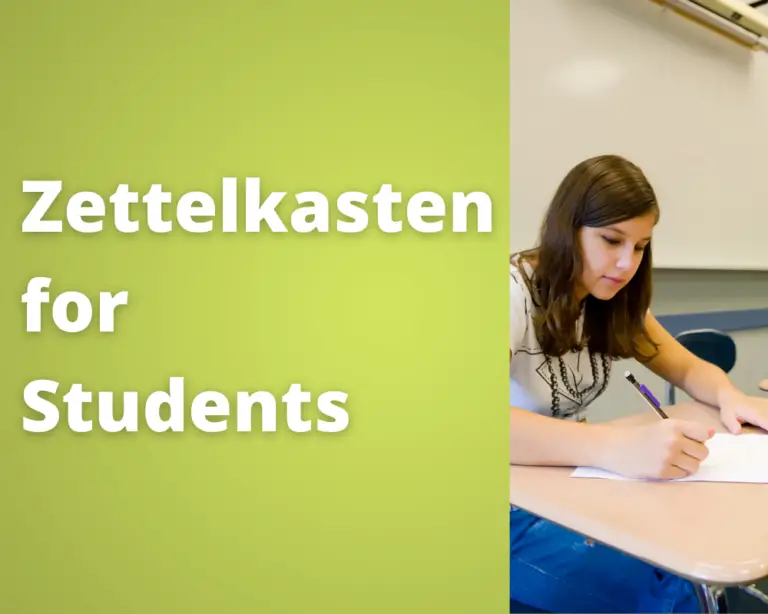How to Use the Zettelkasten System – A Detailed Guide
As someone who spends a lot of their time learning new things, having a system that allows for quick information retrieval is vital. The ability to put information into a structured system that allows for rapid recovery and easy maintenance will enable you to focus on learning.
Hence, here we look at personal tools, techniques, and ways to structure and grow a knowledge web for productive learning. The Zettelkasten method is a tool to optimize your learning and information recall. Let’s begin with the most burning questions about this method and move on to answer a few that you might be interested in learning about in greater detail.
Other Zettelkasten Resources
| Article | Link |
|---|---|
| How to Use Zettelkasten as a Programmer or Developer | Link |
| How to Use Zettelkasten as a Student | Link |
| Zettelkasten vs GTD | Link |
| Creating a Zettelkasten System in Notion | Link |
Does the Zettelkasten System Really Work?

The simple answer is yes. However, to give you an idea, let’s look at what Zettelkasten can do for you. In this method, the primary idea is to create atomic notes, where each note is specific and not more than a few paragraphs. After that, you keep this file with your other detailed notes. The critical aspect is that every single thing you write is in your own words. You may ask, what does this do? Zettelkasten allows you to:
- Link group relevant notes together and help you connect within seconds (aka backlinks).
- Organize your thoughts, opinions, and knowledge in a way that is quick to recall and productive.
- Help you understand the loopholes and contradictions in your understanding, notes, and answers.
- Enable you to write and revise quickly with minimum effort.
While preparing these notes, you need to thoroughly revise your content and ensure that you are not missing any key points. Hence, the note-making process itself helps you prepare, learn, and understand topics better.
So, does the Zettelkasten system work? If you are willing to make an effort and great at connecting dots, this system can work for you.
What is Zettelkasten Good for?

The Zettelkasten method is good for memory retention, answer writing, creating effective notes, and productive learning. Zettelkasten is an excellent knowledge management framework that can scale as it grows in size. Zettelkasten, when followed appropriately, can enhance your thinking and reasoning ability. It can scale your writing and reading skills and help you develop an eye for detail. Sometimes, the gap between you and success is one small detail, and the Zettelkasten method enables you to bridge that gap.
The Zettelkasten has been developed based on how your brain functions and connects each topic that you learn or read. It expands your mind and memory and helps you understand and grasp concepts quickly.
The Zettelkasten technique is useful when you need:
- Vital information to be quickly accessible.
- To see relationships between different notes
- To create new concepts based on inferences derived from the system
What is a Zettelkasten System?

The Zettelkasten technique is a personalized strategic thinking and writing approach. It is an organizing structure that enables you to arrange your information while operating one of the most powerful knowledge management strategies.
The Zettelkasten technique is unique in that it not only allows you to retain and organize your information but also increases your memory and information retention. Creating knowledge linkages enhances memory recall dramatically, and it also teaches your mind to notice patterns.
In brief, the Zettelkasten technique is an excellent process for interacting with information in your life that functions as an accelerator for your learning and knowledge management efforts. Zettelkasten is nothing more than a framework for organizing your ideas, thoughts, and facts. You are reproducing a stream of thought by associating data sources and connecting information (just like hyperlinking web pages), and establishing linkages between chunks of knowledge aids in the retention of absorbed knowledge, allowing your thought process to evolve naturally.
What is a Zettel Note?

Zettelkasten is a German term that means “note box.” The definition describes the content as well as the filing system that will be employed.
A ‘zettel’ is a piece of paper. We write down whatever facts we want to retain on a Zettel. A Zettel in its most basic form is a sticky note, reference card, or sheet of notepad paper on which to jot down your ideas.
We may take notes on the move since our brain works 24/7, and we aren’t restricted to a designated note-taking session. You’re taking brief notes when you scribble down odd ideas, concepts, and facts that come to you out of nowhere.
These notes are unstructured and unplanned. They act as temporary storage for knowledge that you will have to integrate into your system later. In a nutshell, Zettel notes are a way to capture fleeting thoughts that might be important.
What is the Slip-Box Method?
Niklas Luhmann was the prodigy behind the Zettelkasten system or the slip box method. The Zettelkasten technique, developed by the German sociologist, is a smart note-taking and knowledge management system. In his professional life, he was exceedingly prolific.
Luhmann was a researcher who was always reading and studying. He created the systems theory known today as the Zettelkasten or slide box technique to supplement his prior knowledge. Luhmann concentrated on comprehending the material read and connecting it to previously known facts. He employed a paper-based approach to classifying all of the material he read and gathered for this.
How to Take Smart Notes is a book that describes the late German sociologist Niklas Luhmann’s note-taking methodology. He refers to it as a “slip box,” and it is a mechanism that has assisted Luhmann in writing 60 volumes. The core of Luhmann’s slip box approach is comprehensive writing on index cards. (Writing on only one front of the cards, so you don’t have to switch them around.) Each card must include one thought, and cards are then threaded together.
How do I Start Using Zettlekasten?

Beginning your first Zettelkasten note can be a bit confusing and intimidating. However, some essential tips can help you write your first perfect Zettelkasten note.
Stick to the Principle Idea
The Zettelkasten approach is based on principles, and you must follow them for maximum results. The idea of this approach is you connect smaller concepts into larger ideas. Hence, every principle has its significance in this approach.
The Principle of Atomicity
The principle of atomicity groups concepts that belong together in a single note, gives it a unique identity and then limits its scope to a single topic. It condenses the entirety of data into a few words, phrases, and quotes to reflect their connection to one another. This simplification of data helps create small notes relative to the detailed ones.
Principle of Connectivity
The principle of connectivity should follow atomicity. The whole idea of creating small notes is to connect concepts easily and remember them in quick succession. Following the principle of connectivity, the notes are linked together to one another so that when you look at this intricate knowledge web, you can recall them easily.
Following different types of notes
Notes are an essential part of the Zettelkasten approach. Following the methods and techniques, you may build on your current knowledge and develop a knowledge archive of your files and information that is a near-enough reproduction of your brain’s operating system.
The Zettelkasten technique uses three different sorts of notes:
- Literature Notes
- Reference Notes
- Permanent Notes
Each note has a different goal and performs a particular purpose. Fleeting notes and hub notes are two other sorts of notes.
Expertly Manage Your Notes
To deal with the rapid inflow of new information, you can use temporary “buffer” notes to collect items that you may later rearrange. Multiple Layers of Information will surface over time, implying that your notes will contain various topics. Therefore, you can add different layers as follows:
- Patterns and data description
- Descriptions and patterns are interpreted.
- Pattern synthesis, description, and interpretation
As your Zettels archive gradually expands, you may also use different structural methods to organize them. These structural methods may include different levels like:
- Bottom Layer: Information
- Notes on Structure in the Middle Layer
- Top Layer: Notes from the Main Structure including Double Hashes
Want More Tips and Tricks? Subscribe to our Newsletter!
If you haven’t already subscribed, please subscribe to The Productive Engineer newsletter. It is filled with tips and tricks on how to get the most out of the productivity apps you use every day. We hate spam as much as you do and promise only to send you stuff we think will help you get things done.
Check Out Our YouTube Channel!
We have a YouTube channel now and we are working hard to fill it with tips, tricks, how-tos, and tutorials. Click the link below to check it out!
Do you use the same password for multiple sites? Do you have trouble remembering all your passwords? You should try 1Password! 1Password is secure and allows you to log in to sites and fill forms securely with a single click. I use 1Password for all my passwords and it really makes managing all my passwords simple.
For more information on 1Password and to get a 30-day free trial, go to 1Password at the link below:
1Password – The world’s most-loved password manager
Check out our Resources Page
Check out our resources page for the products and services we use every day to get things done or make our lives a little easier at the link below:
Looking to Get Started Blogging or on YouTube?
Getting started can seem daunting and scary (I know it was for me) but it doesn’t have to be. I was very lucky to find a program that that has helped me grow my blog to over 35,000 page views and a YouTube channel that is growing month-over-month.
Project 24 by Income School is the program that I have used. I have been a member for over a year now and just renewed my membership. I cannot recommend Project 24 enough! For more information on Income School, click the link below:
Project 24 byIncome School – Teaching You How to Create Passive Income from Blogs and YouTube
References and Citations
- https://medium.com/@rebeccawilliams9941/the-zettelkasten-method-examples-to-help-you-get-started-8f8a44fa9ae6#:~:text=To%20write%20your%20first%20Zettelkasten,as%20your%20first%20permanent%20note.
- https://zenkit.com/en/blog/a-beginners-guide-to-the-zettelkasten-method/
- https://zettelkasten.de/posts/overview/#:~:text=A%20Zettelkasten%20improves%20your%20thinking,the%20way%20your%20brain%20works.
- https://forge.medium.com/the-key-to-my-creativity-is-this-weird-note-taking-system-e6704c21f61d#:~:text=Here’s%20how%20it%20works%3A%20The,are%20connected%20together%20as%20threads.
